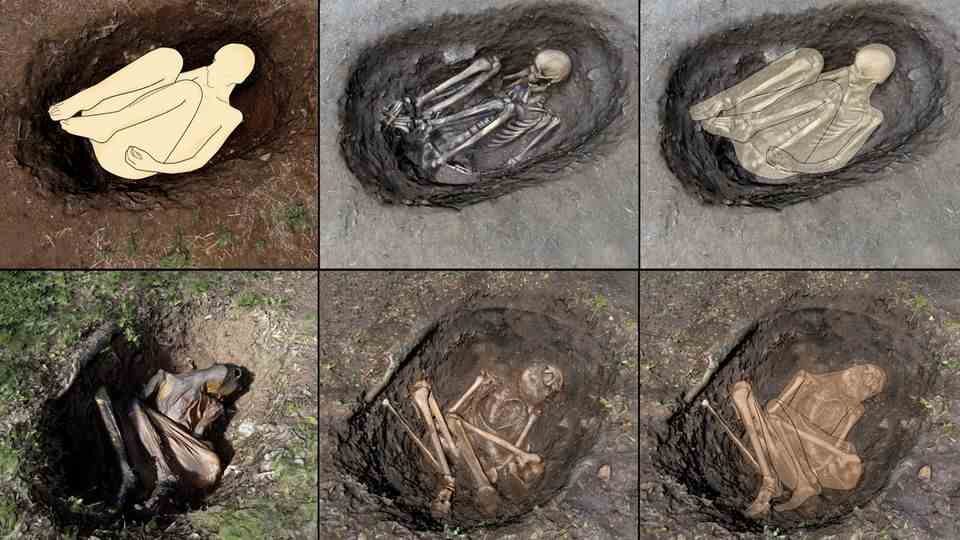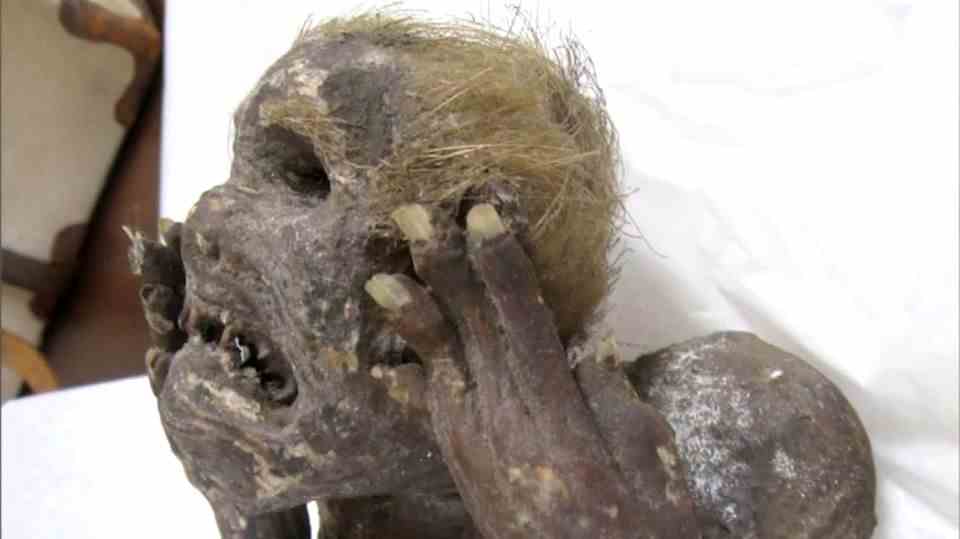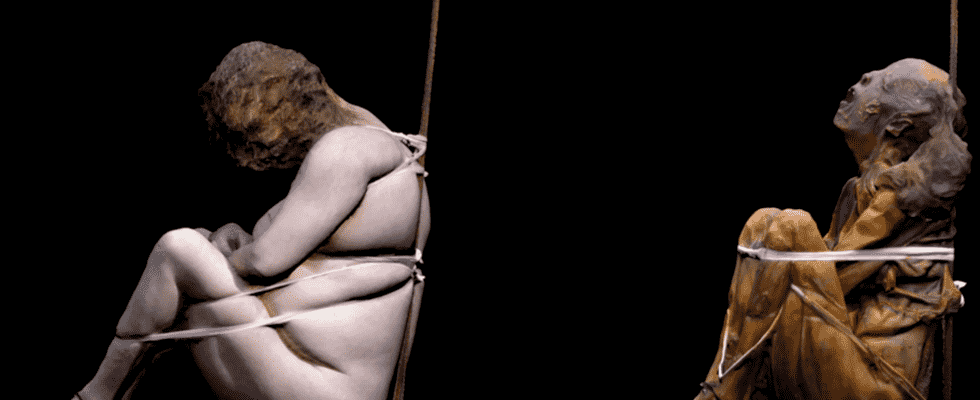archeology
Not from Egypt or Chile: Do the oldest mummies in the world come from Europe?
The computer simulation shows how the mummification of the corpses in the Sado Valley could have taken place
© Cambridge University Press / European Association of Archaeologists
Resurfaced photos from excavations could prove that corpses in Portugal were artificially mummified as early as 8,000 years ago. It would be the oldest evidence of mummification.
In the 1960s, archaeologists found more than 100 skeletons of Stone Age humans in seashell burial mounds in Portugal’s Sado Valley. So far, important records of this excavation, such as photos, site plans and field drawings have been missing, which is why the location and original position of the skeletons can no longer be reconstructed exactly.
Now a Portuguese archaeologist discovered two undeveloped rolls of film from the 1962 excavation in Arapouco in the personal archive of archaeologist Manuel Farinha dos Santos. A Swedish research team from the University of Uppsala used these new records to examine the circumstances of the Stone Age burials more closely – and found something amazing.
Corpses were fixed with bandages
The research team led by Rita Peyroteo-Stjerna concluded that some of the 8,000-year-old bodies had been mummified before burial. This would make them the oldest known artificial mummies in the world – and not, as previously assumed, the approximately 7,000-year-old mummies of the Chinchorro culture from today’s Chile.
On some of the skeletons, the scientists were able to find evidence of both guided and natural mummification. Two of the mummies found in the Sado Valley in particular “stand out because of their unusual body position,” according to a report by the researchers in the “European Journal of Archaeology”. The corpses’ arms and legs had been “bent as much as possible and fixed with bandages”.

Before their burial, the corpses should have their arms and legs bent as much as possible and their bodies dried
© Cambridge University Press / European Association of Archaeologists
Mummification as a significant Mesolithic burial ritual
There are also indications that the bodies may have been air dried or burned for a long time before burial. “Manipulating the body during mummification would preserve the anatomical integrity of the skeleton and ensure the desired body position,” the Swedish researchers explain. In this way, the bodies could have been preserved for a period of time and transported more easily.
All of this could indicate that the Portuguese Stone Age people were very interested in preserving intact bodies and mummifying them. “These practices would also underscore the importance of burial sites and the importance of bringing the dead to those sites in a manner that encloses and protects the body, according to principles that were culturally dictated,” the researchers write . In addition, it would “emphasize the importance of the physical body of the dead, as well as burial sites, in the southern Portuguese Mesolithic.” The Mesolithic, also known as the Middle Stone Age, is the period between about 9650 and 5500 BC. Chr.

Also cultural reasons for mummification
Scientists cannot say for sure why the deceased were mummified. They assume that in this way the transport of the corpses to the place of burial should be facilitated. At the same time, they warn against understanding mummification only from a functional point of view. Rather, “the change in the appearance of the corpse illustrates a cultural understanding of how to deal with death and perhaps even how to control it,” according to the research team.
source: European Journal of Archaeology


